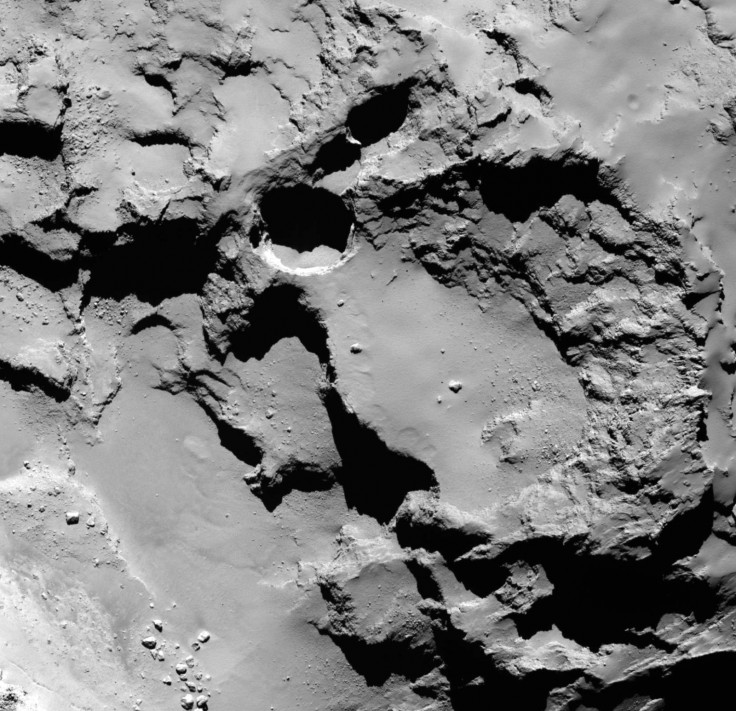Rosetta: Near-perfect circles on comet 67P are massive sinkholes

Sinkholes have been discovered on the surface of comet 67P/Churyumov-Gerasimenko by the European Space Agency's Rosetta spacecraft.
Shortly after landing on the comet last year, scientists noticed several deep and almost perfectly circular pits on the surface.
Using close-up imagery, researchers now believe these pits are sinkholes that formed when the ice beneath the surface turned directly to gas. Sinkholes occur on Earth when subsurface erosion leads to the removal of a large amount of material beneath – eventually the ceiling collapses, leaving a hole behind.
Published in the journal Nature, researchers said the sinkholes show how the comet is undergoing rapid structural changes as it edges ever closer to the sun.
The University of Maryland's Dennis Bodewits, co-author of the paper, noted that the "strange, circular pits" are the same depth as they are wide. They range from tens of metres to several hundred metres in diameter.
Bodewits said: "We propose that they are sinkholes, formed by a surface collapse process very similar to the way sinkholes form here on Earth."
The team analysed images from Rosetta's Optical, Spectroscopic and Infrared Remote Imaging System (OSIRIS) narrow angle camera. They found two distinct types of pit – deep one with steep sides and shallower ones more akin to those seen on other comets.
They also found jets of gas and dust streaming from the sides of the deep pits, but not from the shallower ones.

At first the team thought explosive events could be creating the deep pits, but after capturing one of these events, they realised this could not be the case.
"The amount of material from the outburst was large - about 100,000 kilograms - but this is small compared to the size of the comet and could only explain a hole a couple of meters in diameter," Bodewits said. "The pits we see are much larger. It seems that outbursts aren't driving the process, but instead are one of the consequences."
What they believe is happening is that heat beneath the surface is causing the ice to sublimate. This creates voids that eventually grow so big their ceilings collapse under their own weight. When they collapse, the sunlight causes the remaining ice to sublimate immediately.
Understanding the activity below the surfaces of comets can provide information about how they evolved. The researchers say the size and spatial distribution of the sinkholes suggests large differences in the structural, physical or compositional properties of the first 200m below the surface.
"Ultimately, regardless of the process creating the initial subsurface cavity, active pits indicate that large structural and/or compositional heterogeneities exist within the first few hundred metres below the current nucleus surface of comet 67P," the authors conclude. "Clusters of active pits and collapsed structures are signatures of former cavities underneath, and reflect the thermal history of the nucleus."
© Copyright IBTimes 2025. All rights reserved.






















